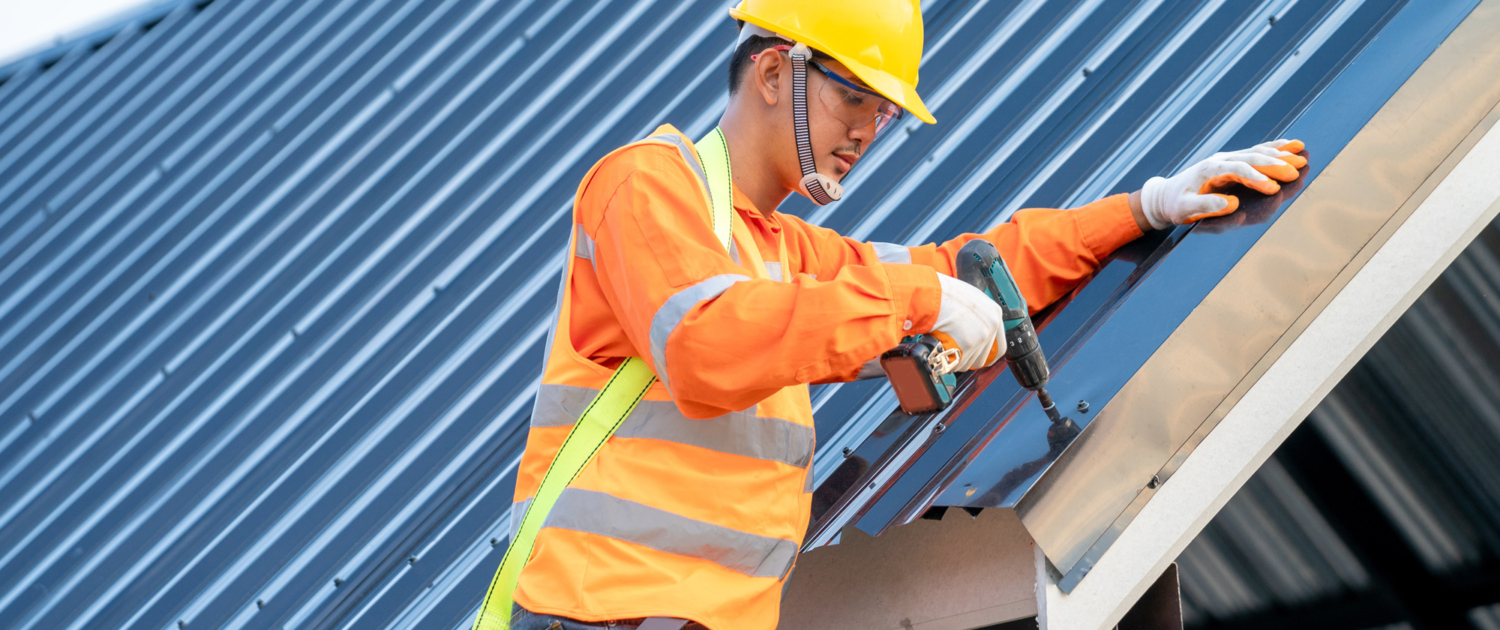
When your roof is damaged, it can lead to larger issues extending far beyond it. Walls and structural support can be damaged. If you’re a business owner, a severe roofing problem can lead to data loss, downtime, and even losing clients. That’s why at Rainville Carlson, we take your roof seriously.
In this article, we’ll share some warning signs that may indicate your roof has been damaged and what to do when you spot them. The big question is, do you need to repair or replace a roof? Here’s everything you need to know:
Roof Repair vs. Roof Replacement
Every commercial building owner or manager hopes for their building to last decades; unfortunately, that isn’t always the case, especially with harsh Minnesota winter conditions. When your building begins to give off obvious signs of stress, you must decide whether to repair or replace roof material.
Here are a few questions to consider that will help your team to make the best decision:
- What is the extent of damage?
- Where is the damage located, and how does that affect the building?
- Are you looking for a short-term fix or a long-term solution?
- How much will repair or replacement work interrupt ongoing productivity?
Let’s run through a few considerations to consider before deciding to repair or replace:
Damage Extent
Often, the damage to a commercial surface can pertain to a small section, which a professional contractor can quickly repair. Repair is recommended if most of your roof is in good shape with good insulation. A replacement is recommended if a contractor determines that more than 25% of your roofing material is damaged or broken, or you risk even more costly trouble in the long run.
Damage Location
Is the damaged roofing location covering an important aspect of ongoing productivity? Are you consistently making repairs in the same area? If so, it’s more cost-effective in the long run to replace roofing material.
Owner’s Outlook, Goals
If the owner or management team of a commercial building is planning to sell the property in the relative future, routine maintenance is recommended, so you can invest those replacement funds toward possible new space. If your current building is the long-term plan, you will save a lot of money with an early replacement.
Warning Signs
Properly maintaining your roof can last up to 25 or 30 years, saving you money in the long run. However, your roof will inevitably get damaged. What you do about that damage often determines how long your roof will last.
Visual Inspection
Sometimes, you’ll be able to recognize roof damage simply from visual inspection. Evidence of internal leaking is the most apparent sign of severe commercial damage. Look out for water spots or stains at the top of your building, walls, and ceiling. It’s a good idea to also visually inspect for external water damage, especially in areas where the roof meets exterior walls like fascia, soffit, and gables. If you see puddles of water collecting on top of your flat roof, you should immediately find an emergency roof leak repair specialist, like Rainville Carlson, before taking further measures.
Ponding, Gutter Issues
Excessive black specks running down your downspouts and in your gutters may indicate more severe damage on your roof. Clogged gutters are the main reason ponding water appears. The best solution to reducing standing water on flat roofs is to contact a partner like Rainville to clean gutters properly so that water runoff can occur more efficiently.
Free Debris
If you find any roofing debris on your commercial flat roof following a storm or heavy winds, it’s always a good idea to inspect to determine where the debris came from. From there, you can determine how vital the debris is to the integrity of your roofing system. All of these warnings can be visually identified; however, a professional inspection is likely necessary to determine the severity of the damage and if there are any deeper, underlying problems behind the damage.
Now that we’ve walked through considerations of commercial roof repair or replacement, along with warning signs for both, check out Rainville Carlson’s commercial roof repair services to determine the extent of your damage.
Commercial Roof Repair
The age of your roof is the most critical factor to consider when deciding whether to repair or replace. Visual warning signs like water leaks, ponding, and loose debris are prime indicators that your roof has sustained some damage. Usually, a simple repair will be enough to remedy these issues on newer roofs.
You also want to determine what might have caused the damage before deciding to replace or repair. If you experienced strong winds or a severe storm, your roof might still be structurally sound enough to repair. If, however, the damage seems to be accumulating from everyday wear and tear, it’s usually time to replace.
Commercial Roof Replacement
Eventually, you’ll have to replace your roof. At a certain point, repairs will only get you so far. As a roof ages, repairs will start costing you more while being less and less effective. Suppose your roof is nearing the end of its warrantied life and is sustaining increasing amounts of damage or showing signs of significant leakage. In that case, you should consider the option of replacement.
Rainville Carlson: Minnesota’s Industry-Leading Provider of Commercial Roof Repair or Replacement
Repairing or replacing roof material can be a tricky decision for commercial building owners or managers. Luckily at Rainville Carlson, we have the hands-on experience and expertise in Minnesota roofing to provide your business with the proper guidance. Following our inspection, we can perform quality repairs or replacements.
If you need help determining whether repairing or replacing roof material is the best option for your commercial building, give a call to our team of experts at Rainville Carlson.



